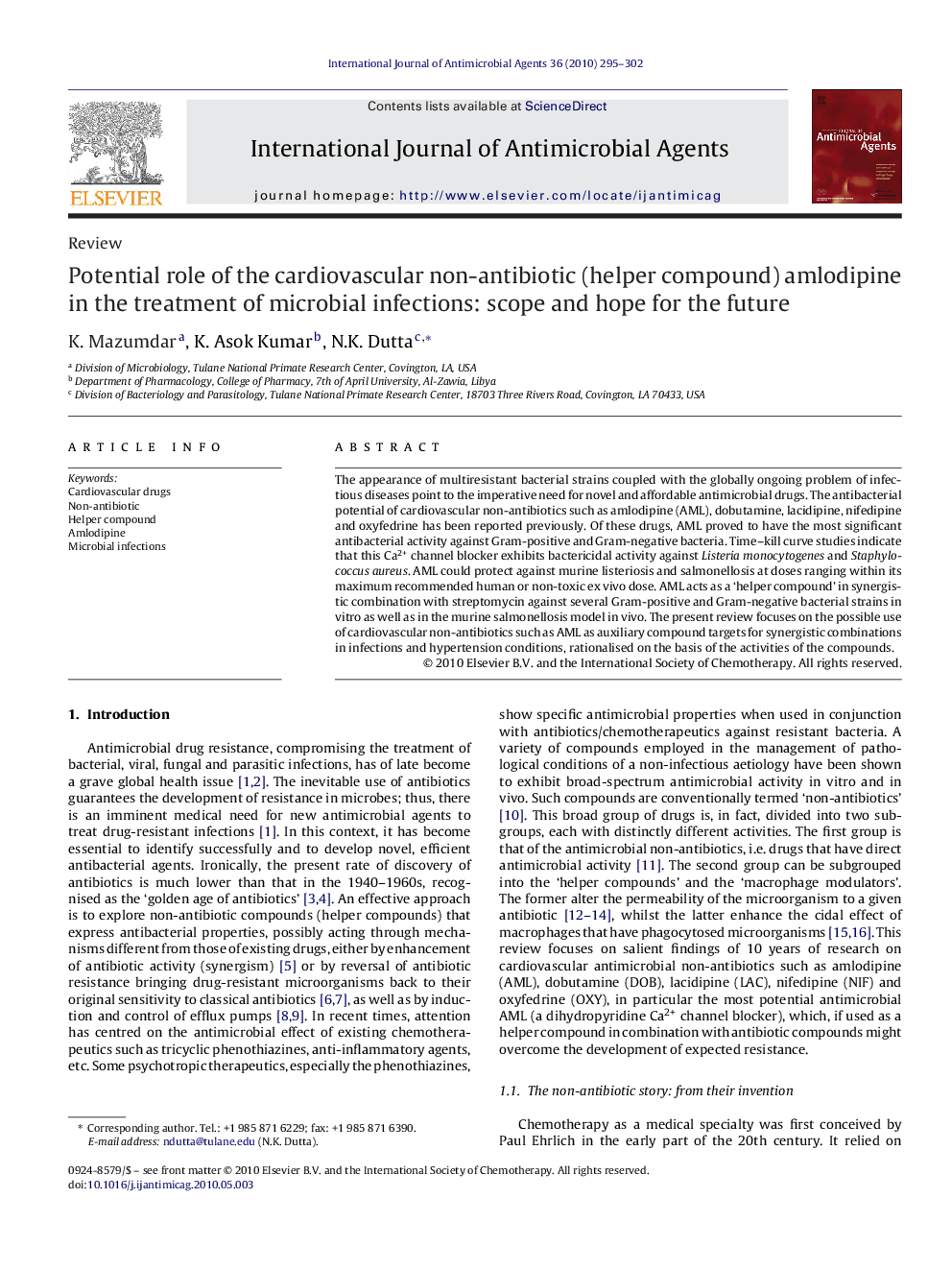| Article ID | Journal | Published Year | Pages | File Type |
|---|---|---|---|---|
| 3359477 | International Journal of Antimicrobial Agents | 2010 | 8 Pages |
The appearance of multiresistant bacterial strains coupled with the globally ongoing problem of infectious diseases point to the imperative need for novel and affordable antimicrobial drugs. The antibacterial potential of cardiovascular non-antibiotics such as amlodipine (AML), dobutamine, lacidipine, nifedipine and oxyfedrine has been reported previously. Of these drugs, AML proved to have the most significant antibacterial activity against Gram-positive and Gram-negative bacteria. Time–kill curve studies indicate that this Ca2+ channel blocker exhibits bactericidal activity against Listeria monocytogenes and Staphylococcus aureus. AML could protect against murine listeriosis and salmonellosis at doses ranging within its maximum recommended human or non-toxic ex vivo dose. AML acts as a ‘helper compound’ in synergistic combination with streptomycin against several Gram-positive and Gram-negative bacterial strains in vitro as well as in the murine salmonellosis model in vivo. The present review focuses on the possible use of cardiovascular non-antibiotics such as AML as auxiliary compound targets for synergistic combinations in infections and hypertension conditions, rationalised on the basis of the activities of the compounds.
